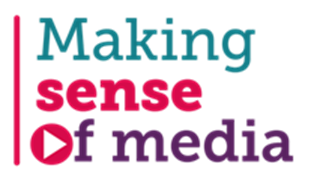UK regulator, Ofcom, has published a collection of research reports offering a glimpse into the media habits and online lives of children, parents and adults in the UK as part of the Making Sense of Media programme.
Rivalries, reactions, rapidity – what makes a popular video
According to the most recent Children’s Media Lives study, much of the social media content consumed by the young participants can be characterised as ‘dramatic’ videos, engineered to grab and maintain their attention, but which require minimal effort and focus. Gossip, conflict, controversy, extreme challenges and high stakes – often involving large sums of money – are recurring themes.
One screen is not enough
Ofcom’s research also showed a rise of ‘split-screening’ social media posts which allows children to watch more than one short-form video simultaneously, on a single-screen, side-by-side or stacked on top of one another. This appears to be a progression of the ‘multi-screening’ behaviours seen in previous research waves, where children reported difficulties focusing on one screen-based activity at a time.
Watching more, sharing less
The data also showed an interesting trend when children were much less likely to post their own videos (32%) than to watch them (96%). Children in the Media Lives study also reported seeing less content created by their friends, and even when they do see it, are interacting with it less. It appears that contact between friends online is now driven by chat apps or message functions within apps, rather than on public feeds.
All the apps
The research also includes a deep-dive into the online lives of older teenagers and young adults aged 16 to 24. This group typically use nine online communication sites or apps on a regular basis – compared to six for the average adult internet user. Their use of use all four types of online communications – social media, messaging, video-sharing and live-streaming – significantly higher than the average user (87% vs 61%).
The rise of Snapchat and TikTok
Snapchat and TikTok have grown in popularity among 16-24s over the last year, overtaking Instagram as the social media platform they said they used most often. In autumn 2022, just over one fifth now use BeReal – an app which asks users to share, once a day, a real-life, unfiltered photo with friends – up from 9% in spring 2022.
Screen Wellbeing
There was also an increase in the number of social media users aged 16-24 who thought they spent too much time on social media (51% up from 42% in 2021) and there were indicators that they were setting boundaries and reported deliberately taking break from using any social media apps more often than average users (36% vs. 25% average) or deleting apps to avoid spending too much time on them (32% vs. 23% average).
Older teens and young adults were also generally more likely than the average user to seek out online content and services that support their wellbeing (89% vs. 78% of all online adults). Specifically, use of websites or apps designed to help with relaxation (44% vs. 34%), improve mood (43% vs. 26%), aid sleep (37% vs. 22%), manage anxiety (33% vs. 19%), follow a fitness programme or health-tracker (29% vs. 24%), meditate (21% vs. 15%) or feel energised (20% vs. 11%).
To hear more about Ofcom’s Media Literacy research register now for their research event which will take place on 3 May and which will publicise findings from Ofcom’s Adults’ and Children’s media literacy trackers and Media Lives, and will provide an opportunity for Q & A.
To access all the research visit the Making Sense of Media website
